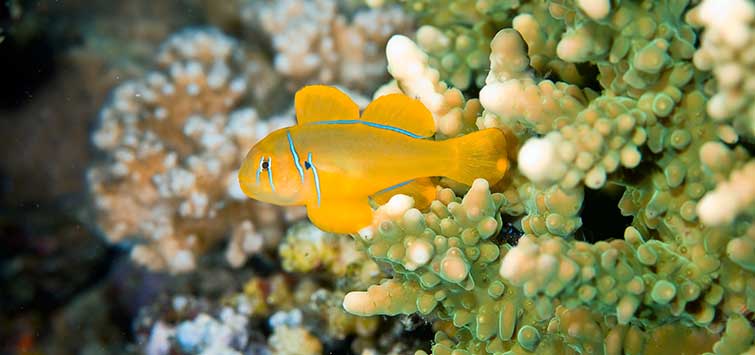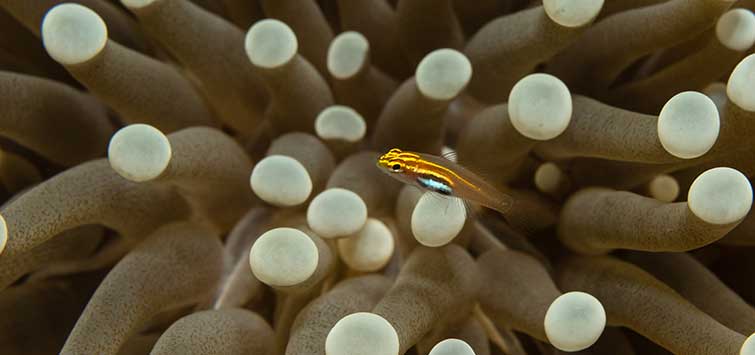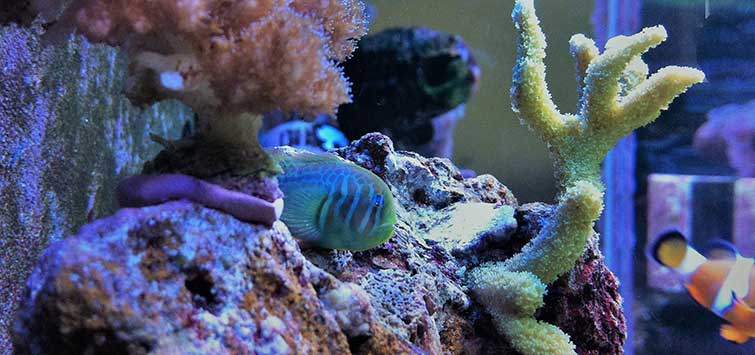Gobiodon citrinus
Common Names: Blue stripe goby, citron clown goby, citron goby, clown goby, coral goby, fourbar goby, lemon coral goby, poison goby, yellow clown goby, yellow coral goby, etc.
Type Locality: Red Sea: Massawa, Eritrea
Range: Indo-West Pacific: Red Sea south to Mozambique and east to Samoa, north to southern Japan, south to Australia and the Great Barrier Reef
Taxonomic Troubles: Originally described as Gobius citrinus. You may see it identified as Gobiodon hypselopterus.
Size: 6.6 cm (2½ inches).
Preferred Water Chemistry: Tropical marine.
Difficulty: Hardy if fed properly. Often needs to be trained to eat nonliving foods.
Tank Setup: A reef tank is perfect. Tankmates must be non-aggressive feeders, or the citron goby must be target fed. Although peaceful toward almost all other fish, citron gobies may fight over territories with conspecifics in small to midsize tanks. The fish produce
Feeding: A planktonivore. Intelligent and inquisitive, the lemon goby will quickly learn the hand that feeds it, and once that happens, it should eagerly take just about anything offered, from flakes to live crustaceans. Like most planktonivores, it requires small
Breeding: Spawns often in captivity; young occasionally raised.
Fish Description
Bright lemon yellow, with iridescent blue markings—lines on the head and one stripe under the dorsal fin. There is also a dark, dusky phase, but obviously those morphs are not usually collected for export.
Notes
This species is prized for its hardiness and personality. Its bright colors and comical ways comprise much of the appeal. These and other clown gobies have an unusual relationship with their small-polyp-stony (SPS) coral hosts. Some would consider it parasitism, but most agree it is a mutually beneficial symbiosis. It does eat coral polyps and often strips them from a small area to create a spot for its eggs, but a large, healthy specimen of Acropora will not suffer unduly.
In the wild this territorial fish will benefit its host coral at least by chasing off more ravenous corallivores. As a clownfish rarely strays from its anemone, the goby’s life is centered on its coral colony. They are typically found in pairs or small groups.
There is some evidence that these hermaphrodites can not only change sex but also reverse a change; if so, this would ensure that any time two conspecifics find themselves in the same coral branches they would be a viable pair. This species is highly recommended for peaceful communities of tiny or small fishes, and it is ideal as the star of a nano reef setup.

.png?h=595&iar=0&w=2781&hash=5FD5E69473BCC22199FBFA2FB71B6033)



